Peggy's Weather Report from Ptarmigan Lake: *Time: 7:03 am Temperature: 12.4 C 54.3 F Humidity: 80.0% Wind: slight Clouds: Nimbostratus, raining and foggy *
*Cloud Cover: 100% overcast
Light level: 891 X10 Lux
*
Rain, lightening, and thunder continued through the night but did not bother us in our well-sealed tents. We got up early because we knew it would be a long day. Today we were going to set up the coring platform, collect a long sediment core from Ptarmigan Lake, take the platform and boat apart and carry the pieces up the hill, load the truck, and drive 4-5 hours to Anchorage. So we got up at 5:30 am, had breakfast and then packed up our tents and personal items loading them and the cooking equipment into the car to head to Ptarmigan Lake where Heidi and Caleb had camped to protect the assembled boat we left there. Here is a picture of the campground area before we left.
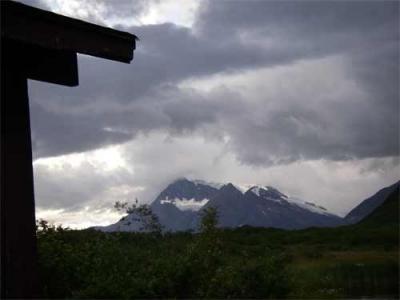
It was overcast and drizzling. All was well when we arrived at the lake which was about 10 miles down the road. Caleb and Heidi had started setting up the coring platform.
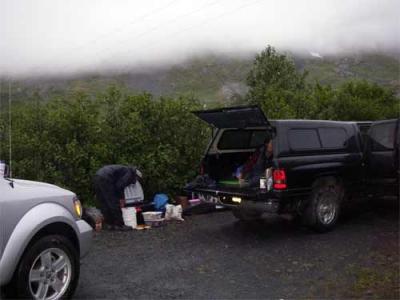
This is when the team consisting of Caleb, Chris, Heidi, and Dr. Kaufman set about their task like the well-trained unit that they are. I jumped in helping where I saw a need. This team knew why they were there and worked very efficiently to prepare for the coring work. This part of their work is physical and involves problem-solving if something doesn't fit or a cable is missing, etc. First, all the equipment had to be carried down a slippery, vegetation-covered trail from the dirt road to the water's edge. Then all the pieces of the platform and pontoon boat had to be assembled. The chains, clips, hooks, pulleys, ropes, motor, gas tank, coring tubes, caps, and the list goes on. It was raining and rocky surface was slippery (but the views of glaciers and hillsides from the lake were out of this world).
The planning and organization of getting to this point was incredible; getting all the equipment to Anchorage, storing it, sharing it with other teams, packing it into a vehicle with all the camping gear and food, and making sure nothing was left behind. There are no hardware stores in the field for items left behind.
Getting to a research location is no easy task either. We were unable to get to Allison Lake because we had to wait for the weather to clear up so the float plane could get our equipment from Hallet Lake. Fog kept Dr. Kaufman from flying to Valdez; he rented the car and drove to meet us instead. These changes in plan are expected and dealt with as they arise.
The team had to inflate the pontoon platform, and the foot pump sprung a leak. Duct tape to the rescue; a working pump was constructed from two broken pumps. Everyone was focused on their tasks. After a little over an hour, the boat was attached to the pontoon platform, gear and tubes were loaded, the team got in and shoved off.
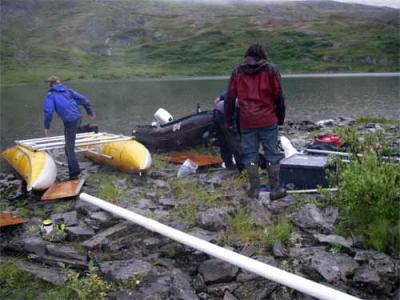
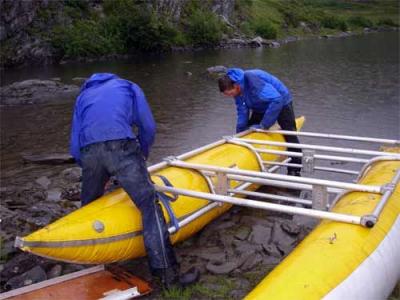
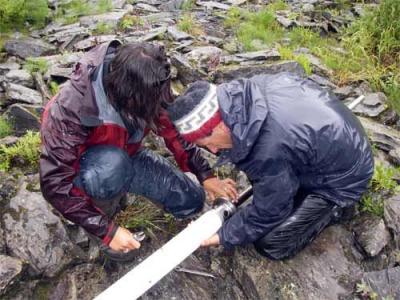
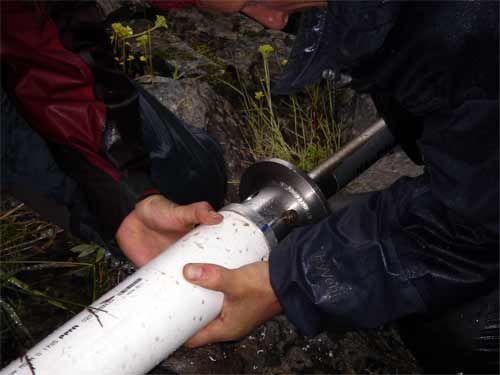
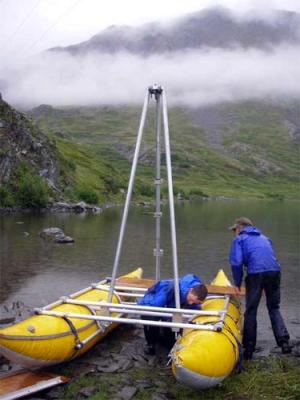
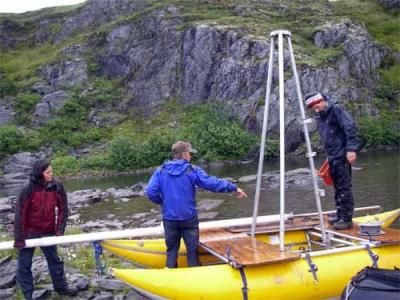
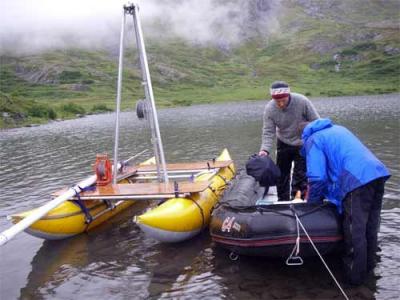
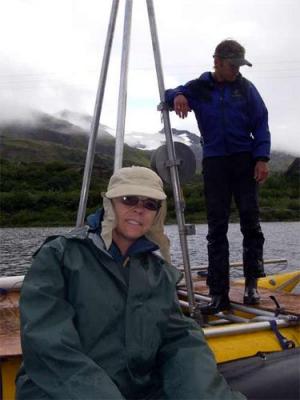
Finally we were out on the lake using the bathymetry device to locate a spot at the proper depth for coring. Once the spot was determined, three anchor rocks attached to ropes were strategically dropped into the water to secure the boat and platform. The coring tube was lowered by the pulley system. We took turns hammering the core tube into the sediment using the rope, chains and pulley system. The hammer for a long core is much heavier than the hammer used yesterday on the short core. It required the pulley system and two people to pull simultaneously opposite each other to hammer the core tube into the sediment. Chris tried to purchase a speaker for his iPod so we could listen to music and core to the beat, but we were unable to find a speaker that worked while in Anchorage.
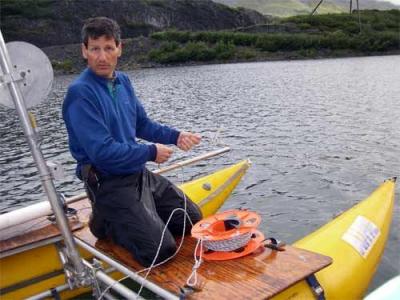
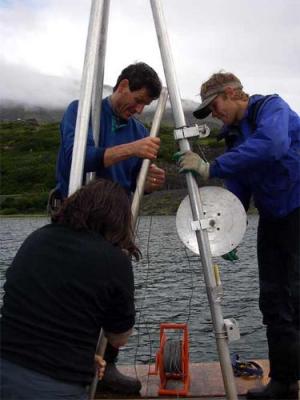
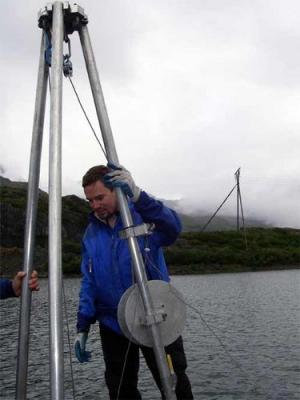
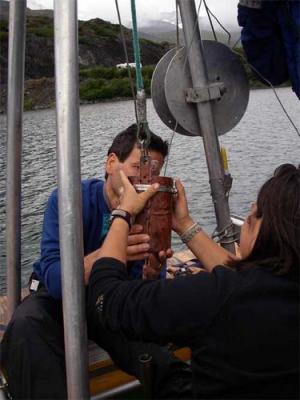
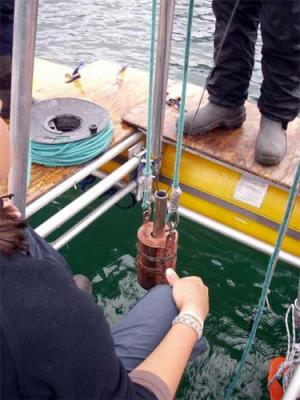
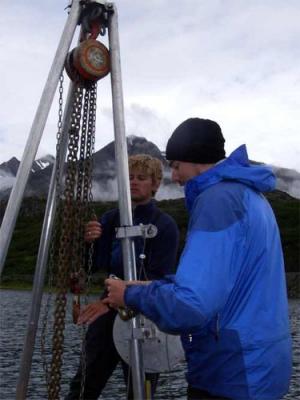
When it was about 4 meters deep, the core was pulled up and transported to shore. It started out as a 4 meter core but some of the sediment escaped as it was brought up and we ended up with about a two and a half meter core. It was processed and capped for shipping, another process which involved cutting the thick coring tube with a device they called a Holyoker. This cutting device was designed by a researcher friend of theirs from Mt. Holyoke College.
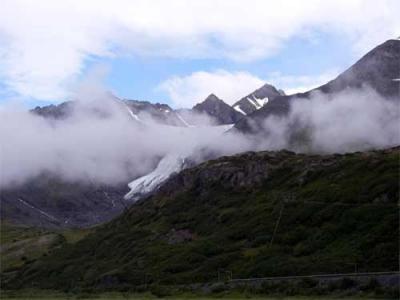
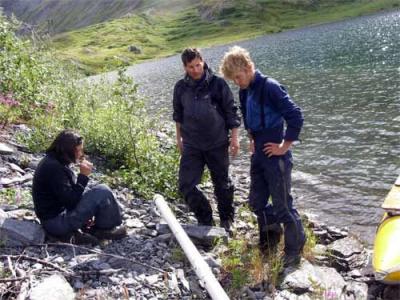
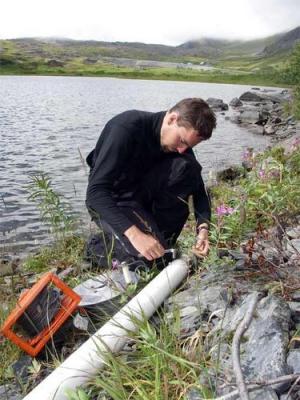
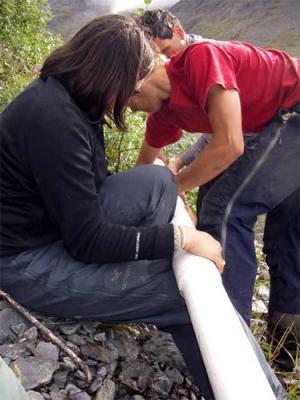
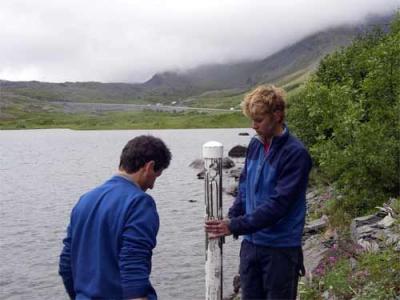
The boat and coring platform had to be disassembled and strategically stored in the back of the truck with all the other items. From there we headed down the road to Anchorage doing more water tests of sites along the way.
I had a chance to talk with Dr. Darrell Kaufman on the way back to Anchorage. He is well-known in his field and the students I worked with came to Northern Arizona University specifically to work with him for their Masters degrees. There was mutual respect among all the team members. They are passionate about their work and feel it is very important work. I will post the interview as a podcast when it gets edited and the car noise is reduced.
We arrived at the University of Alaska, checked into the dorms and then ate dinner at the Bears Tooth, a popular spot in town. Tomorrow is packing day and the teams will split up to cover more lakes.

